CAMPAIGN: CARBURETOR THROTTLE BODY ASSEMBLY

MODELS: 1986 Fleetwood Brougham, Caprice Classic Wagon, Custom Cruiser Wagon
General Motors of Canada has determined that the carburetor throttle body assembly on certain 1986 Fleetwood Brougham, Caprice Classic Wagon, and Custom Cruiser Wagons may have been damaged during vehicle assembly. As a result, the primary throttle valves may not provide the proper air/fuel mixture causing poor engine idle quality. In addition the transmission throttle valve (T.V.) cable may have been improperly adjusted. To correct this condition, the carburetor throttle body assembly is to be replaced and the T.V. cable adjusted as outlined in the service procedure section of this bulletin.
VEHICLES INVOLVED:
1986 Fleetwood Brougham, Caprice Classic Wagon and Custom Cruiser Wagon Models within the following breakpoints:
Plant From Through ----- ---- ------- FLEETWOOD. G9727649 G9728149 Oshawa
CAPRICE G9148416 G9148707 Oshawa
CUSTOM G9016901 G9016989 Oshawa
All affected vehicles have been identified by the VIN listing provided to involved Dealers with this bulletin. Any Dealer not receiving a listing was not shipped any of the affected vehicles.
DEALER CAMPAIGN RESPONSIBILITY:
Dealers are to service all vehicles subject to this campaign at no charge to Owners, regardless of mileage, age of vehicle, or ownership, from this time forward.
Whenever a vehicle subject to this campaign is taken into your new or used vehicle inventory, or it is in your Dealership for service in the future, you should take the steps necessary to be sure the campaign correction has been made before reselling or releasing the vehicle.
Owners of vehicles recently sold from your new vehicle inventory are to be contacted by the Dealer, and arrangements made to make the required modification according to instructions contained in this bulletin.
CAMPAIGN PROCEDURE:
Refer to Section 4 of the Service Policies and Procedures Manual for the detailed procedure on handling Product Campaigns. Dealers are requested to complete the campaign on all transfers as soon as possible.
OWNER NOTIFICATION:
All owners of record at the time of campaign release are shown on the attached computer listing and have been notified by first class mail from General Motors. The listings provided are for campaign activity only and should not be used for any other purpose.
PARTS INFORMATION:
Parts required for this modification will be provided to involved Dealers on a "no-charge" basis as follows:
1 - Carburetor Throttle Body Assembly 17111489 1 - Carburetor Mounting Base Gasket 22508038 1 - Throttle Body Gasket 17064729
PARTS AND LABOUR CLAIM INFORMATION:
Credit for the campaign work performed will be paid upon receipt ofa properly completed campaign claim card, RAPID terminal or DCS transmission in accordance with the following:
Repair Code Description Time Allowance ----------- ----------- -------------- 2A Install Throttle Body Assembly 1.5 and Adjust Carburetor
Time allowance includes 0.1 hour for Dealer administrative detail associated with this campaign. An amount of $30.00 will be included for parts handling.
SERVICE PROCEDURE:
1. Open hood, instal1 fender Covers and disconnect the negative battery cable.
2. Remove air cleaner,
3. Disconnect the following: - Throttle return spring. - Accelerator control cable at carburetor. - Transmission throttle valve (T.V.) cable at carburetor(see page 7A2-6, Fig. 4 of the 1986 Custom Cruiser Service Manual). - Cruise control linkage (if equipped). - All vacuum lines to carburetor. (NOTE: Use of masking tape to label vacuum line position will ease reassembly). - Electrical connectors to carburetor. - Choke heat pipe. - Fuel line, at carburetor inlet.
4. Remove four carburetor mounting bolts and remove carburetor and flange (base) gasket.
5. Drain gasoline from carburetor and dispose of properly.
CAUTION:
Never drain or store gasoline in an open container due to the possibility of fire or explosion.
6. Place carburetor on carburetor holding stand J9789-118, BT-3553 or equivalent.
7. Remove accelerator pump link retainer and disengage pump link from pump lever. Refer to Figure 1.
8. Remove air horn screws number 6 and 7 from carburetor. Refer to Figure 2.
9. Turn carburetor over and remove:
a. Throttle body to float bowl attachment screws. b. Throttle body from carburetor. c. Pipe plug from rear of throttle body. d. Float bowl to throttle body gasket.
10. Disconnect and remove accelerator pump link from throttle body.
11. Install:
a. New float bowl to throttle body gasket on carburetor. (New gasket is supplied in throttle body kit. Refer to parts information in this bulletin). b. Accelerator pump link to new throttle body. c. New throttle body to carburetor. d. Throttle body to float bowl attachment screws and tighten screws.
12. Turn carburetor over, Install and tighten two air horn screws previously removed and tighten all other air horn screws in the sequence show. Refer to Figure 2.
13. Connect accelerator pump link to pump lever and install retainer. Refer to Figure 1.
14. Using tool J-29030-B, BT-7610B, or equivalent, turn both mixture needles clockwise until lightly seated.
15. Turn each mixture needle counterclockwise 3 turns.
16. Clean carburetor sealing surface on intake manifold and install carburetor with new flange (base) gasket supplied in throttle body kit.
17. Install four carburetor mounting bolts and tighten to 16 N.m (12 lbs. ft.) in the following sequence:
a. Left rear b. Right front c. Right rear d. Left front
18. Reinstall the following:
- Accelerator control cable. Make certain that the retainer tang is secured over the throttle lever stud. - Throttle return spring. - Transmission throttle valve (T.V.) cable and adjust as outlined on page 7A-7 of the 1986 Custom Cruiser Service Manual. - Cruise control linkage, if equipped. Lube carburetor end with 1052541 lubricant prior to installation. - All vacuum lines to carburetor. - Electrical connectors to carburetor. - Choke heater pipe. (Tighten to 11 N.m, 95 lbs. in.) - Fuel line at carburetor inlet. (Tighten to 41 N.m, 30 lbs. ft.) - Pipe plug in rear of throttle body. Coat plug with 1052080 sealer and tighten to 10 N.m (88 lbs. in.)
19. Adjust the idle mixture needles as follows:
NOTE: If the idle air bleed valve cover on the carburetor air horn has been previously removed, it will be necessary to adjust the idle air bleed valve setting prior to idle mixture needle adjustment. Refer to page 6El-C2A-7 in the 1986 Custom Cruiser Service Manual for idle air bleed valve adjustment.
a. Disconnect canister purge vacuum hose at canister and plug hose. b. Plug air cleaner vacuum line. c. Connect dwell meter to the mixture control solenoid test connector. d. With transmission in park, parking brake set and drive wheels blocked, start engine. Check for fuel leaks and correct if necessary.
e. Allow engine to run until warm. (Upper radiator hose warm to touch and choke open). Ensure fast idle cam is down completely.
f. Place vehicle in drive.
g. While idling in Drive adjust both Mixture needles equally, in 1/8 turn increments, until dwell reading varies within the 25-35 DEG range, attempting to be as close to 30 DEG as possible. If reading is too low, turn mixture needles counterclockwise. If reading is too high, turn mixture needles clockwise. Allow time for dwell reading to stabilize after each adjustment.
NOTE: If dwell reading becomes fixed, the 0 2 sensor has probably cooled off (open loop). To warm the 02 sensor (closed loop) place transmission in park and flash the throttle 3 or 4 times.
h. After adjustments are complete, seal the idle mixture needle opening in the throttle body, using silicone sealant, RTV rubber, or equivalent.
20. Adjust the idle load compensator (ILC) as outlined on page 6El-C2A-11 of the 1986 Custom Cruiser Service Manual.
21. Check the throttle body secondary lever for proper adjustment of the following. Adjust if necessary:
- Secondary lockout. Refer to Figure 3. - Secondary closing. Refer to Figure 4. - Secondary opening. Refer to Figure 5.
22. Check and if necessary adjust the throttle position sensor (TPS) as outlined on page 6El-C2A-15 in the 1986 Custom Cruiser Service Manual.
NOTE: If TPS adjustment is required, remove existing TPS screw and install the new TPS screw included in throttle body kit prior to making adjustment.
23. Following instructions on the vehicles emission control label, adjust engine fast idle. NOTE: It is not necessary to adjust ignition timing.
24. Clear trouble codes in ECM memory by removing the 10 amp ECM fuse from fuse panel for 5 seconds.
25. If equipped with cruise control, check and if needed, adjust the servo rod length as described on page 9B-3 (Fig. 2) of the Custom Cruiser Service Manual.
26. Inspect all carburetor linkage for proper operation.
27. Install air cleaner.
28. Install campaign identification label.
INSTALLATION OF CAMPAIGN IDENTIFICATION LABEL
Clean surface of radiator upper mounting panel and apply a Campaign Identification Label. Make sure the correct campaign number is inserted on the label. This will indicate that the campaign has been completed.
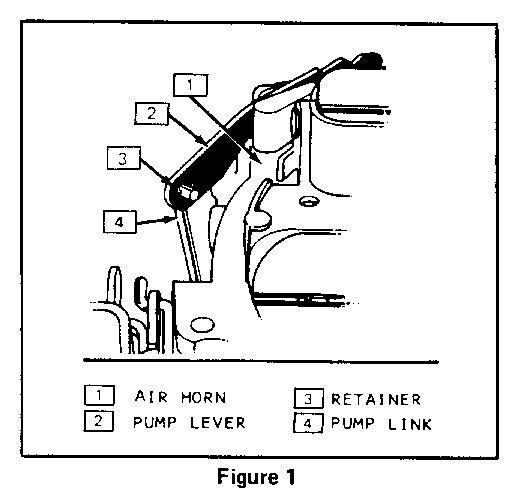
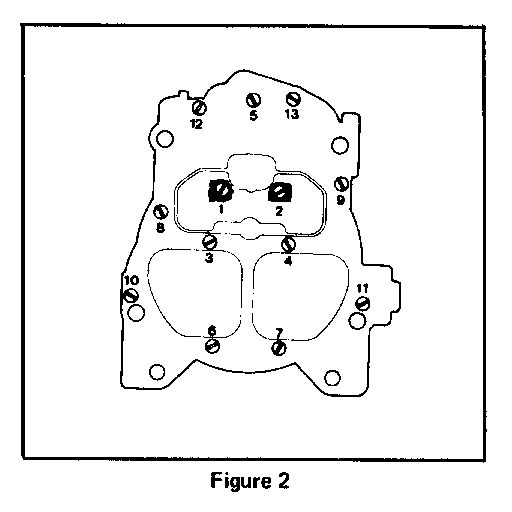
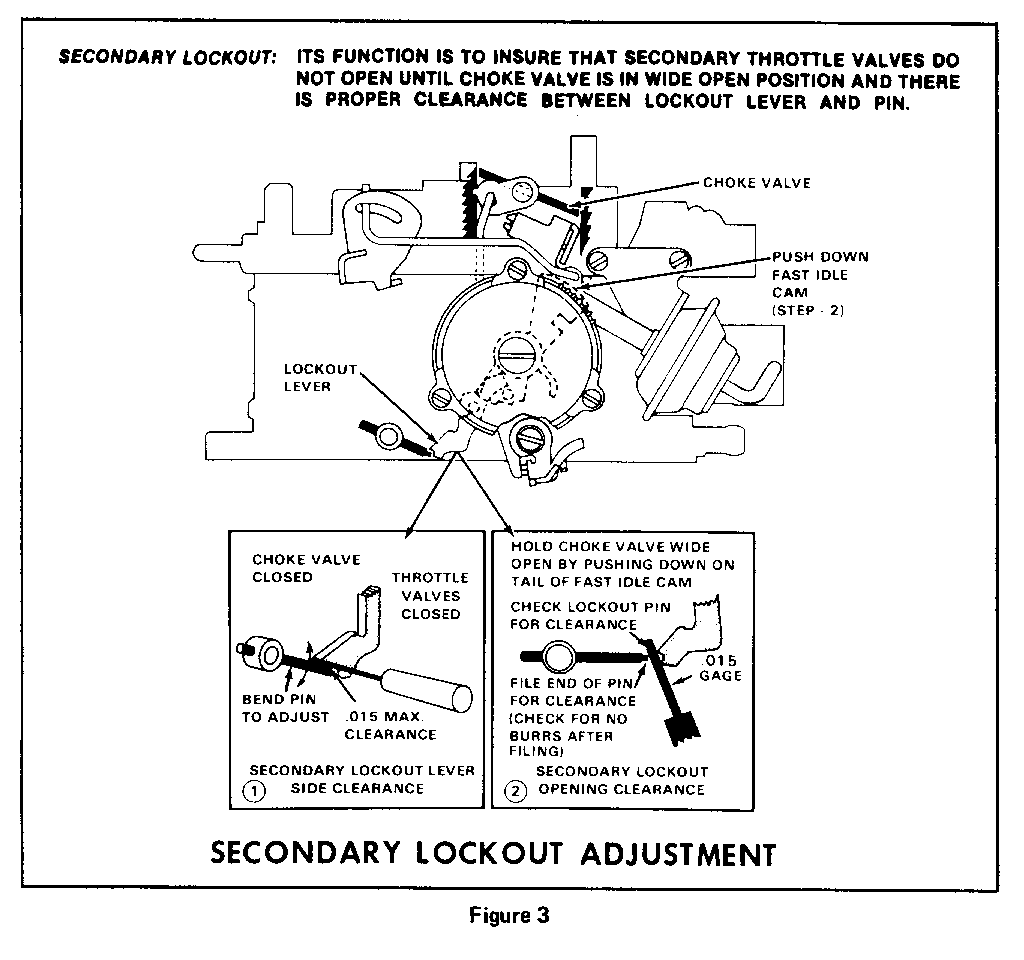
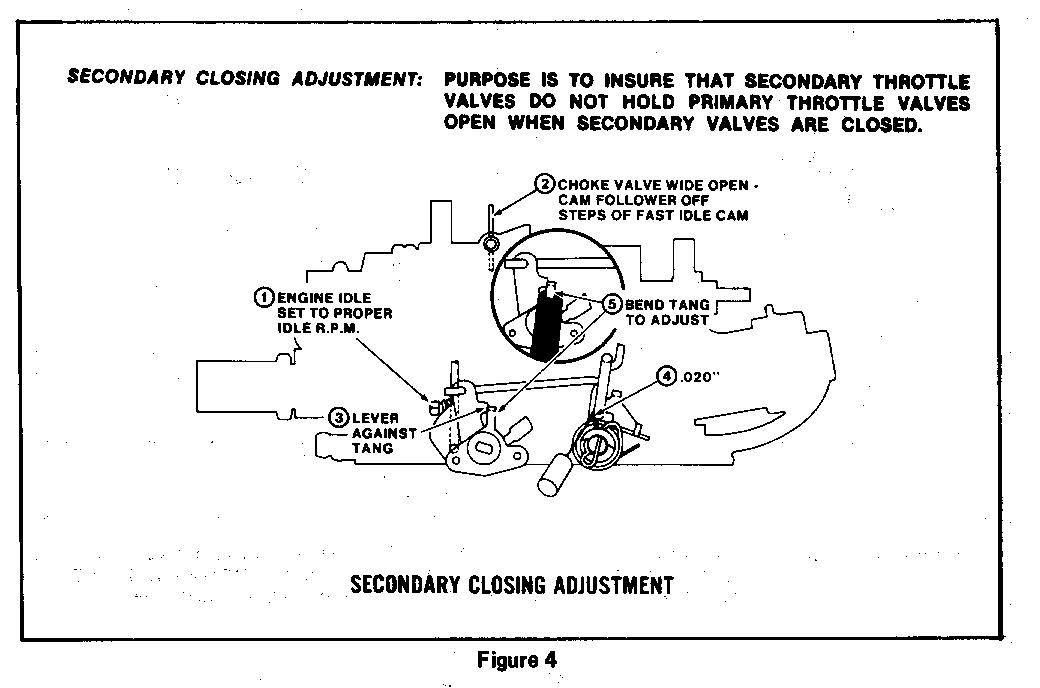
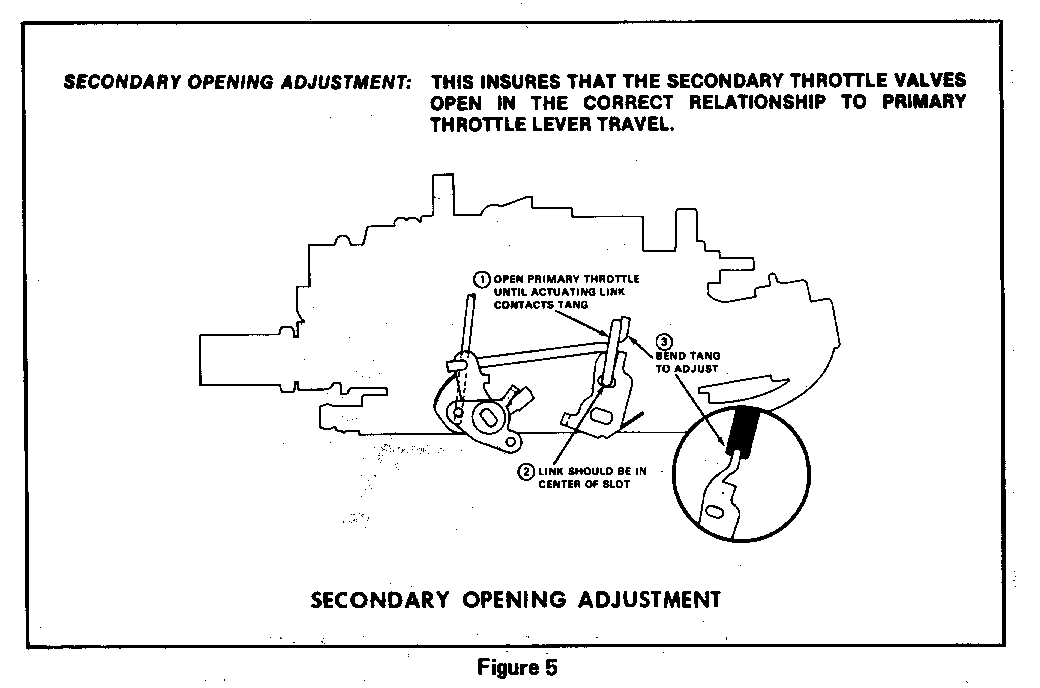
General Motors bulletins are intended for use by professional technicians, not a "do-it-yourselfer". They are written to inform those technicians of conditions that may occur on some vehicles, or to provide information that could assist in the proper service of a vehicle. Properly trained technicians have the equipment, tools, safety instructions and know-how to do a job properly and safely. If a condition is described, do not assume that the bulletin applies to your vehicle, or that your vehicle will have that condition. See a General Motors dealer servicing your brand of General Motors vehicle for information on whether your vehicle may benefit from the information.
